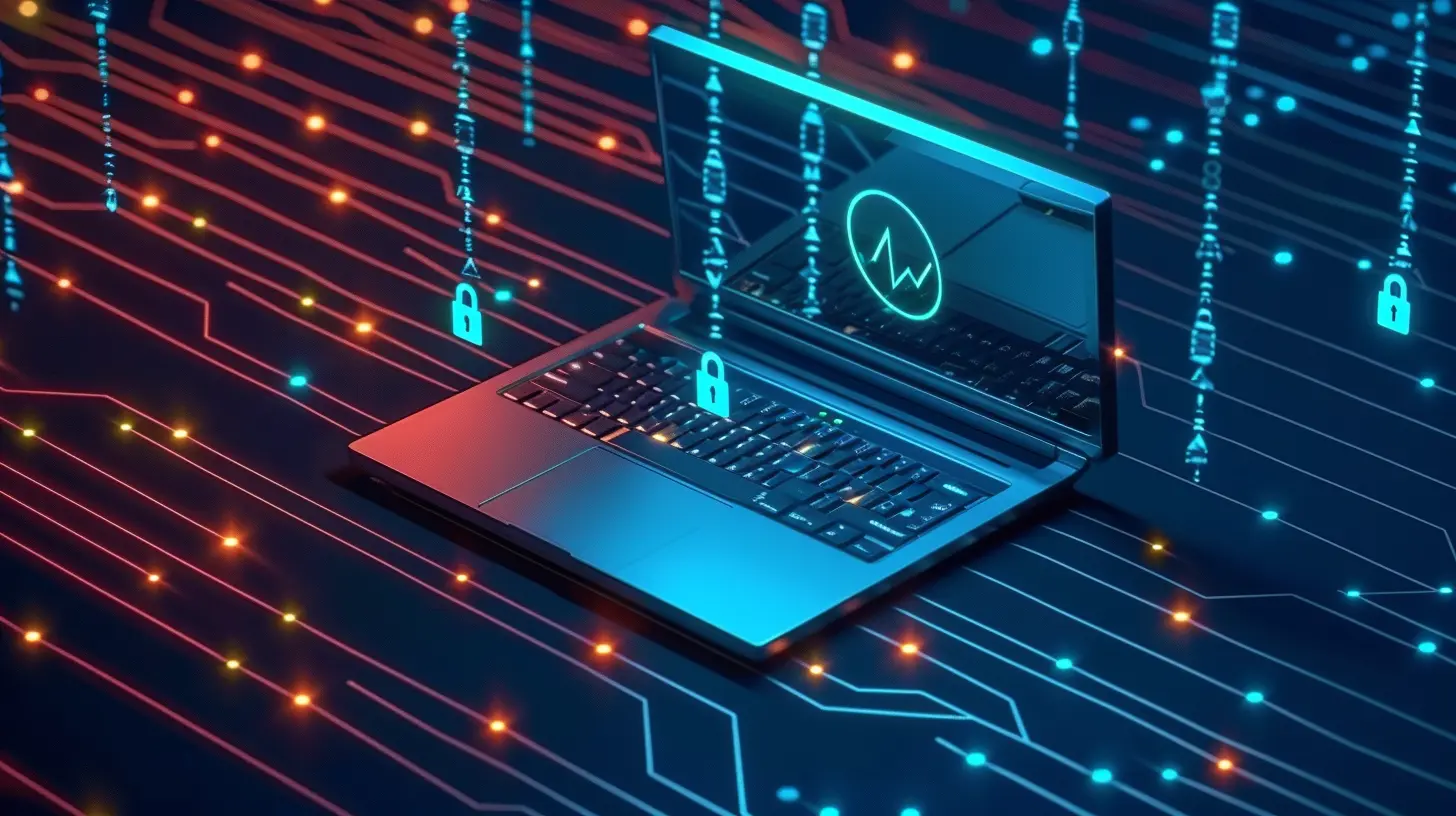How to Detect and Prevent Phishing Attacks
7 June 2025
You open your inbox and see an email from “Amazon” saying your account has been compromised. It looks legit—logo’s perfect, the writing sounds official, and there's a big button that says “Verify Your Account.” Do you click it?
Let’s pump the brakes right there.
That’s how millions of people fall into phishing traps every day. These scams are getting sneakier, more convincing, and more dangerous. Don’t worry—I’ve got your back. In this guide, we’ll break everything down in plain English: What phishing really is, how to spot the red flags, and how to protect yourself (and your data) from the cyber sharks.
🕵️♂️ Phishing: What Is It Really?
Phishing is basically the art of the con—but digital style. It’s when cybercriminals pretend to be someone you trust (like a bank, your boss, or Netflix) to trick you into giving up sensitive info. We're talking passwords, credit card numbers, social security numbers—the works.Imagine it like fishing (hence the name “phishing”)—they cast a wide net hoping someone bites. And unfortunately, someone always does.
🎣 Common Types of Phishing Attacks
Let’s break down the most common flavors of this scam:1. Email Phishing
This is the classic one. You get an email that looks like it’s from a legit source, but it’s actually fake. The goal? Get you to click a malicious link or provide sensitive info.2. Spear Phishing
More targeted and dangerous. This isn’t a random email blast—this one’s personalized. They might use your name, job title, or mention a recent purchase.3. Whaling
The big fish. Whaling goes after high-profile targets like CEOs or CFOs. These scams are carefully crafted and can cost companies millions.4. Smishing & Vishing
Smishing = phishing over SMSVishing = phishing over voice (yep, phone calls!)
Ever gotten a sketchy text saying “Your package delivery failed”? That’s smishing.
🧠 How to Detect a Phishing Attack Like a Pro
Spotting phishing emails isn’t always obvious—these cyber crooks are clever. But trust me, with the right eye, you can sniff them out.Let’s dive into the red flags:
🚩 1. A Sense of Urgency or Fear
“We’ve suspended your account!”“Your payment failed!”
“Act now or lose access!”
Sound familiar? These messages are designed to freak you out so you act without thinking. Always slow down and double-check.
🚩 2. Weird Email Addresses
The display name might say “Apple Support” but the email address is something like [email protected].Spoiler alert: That ain't Apple.
🚩 3. Bad Grammar and Typos
Big brands don’t usually fumble with basic grammar. If you see sloppy writing or strange phrases, chances are it’s a phish.🚩 4. Suspicious Links
Hover over any link (without clicking it). Do the URL and the anchor text match? Is the domain weird? Phishing links often look like legit URLs but with subtle tweaks, like:- paypal.com → paypaI.com (see that sneaky capital "i"?)
- google.com → g00gle.com
🚩 5. Unexpected Attachments
Never, ever open an attachment from an unknown sender. PDF, Word, Excel, even .zip files can be weaponized.
🔐 How to Prevent Phishing Attacks
Okay, so now you can spot a phishing attempt. That’s awesome. But what’s even better? Stopping them from affecting you entirely.Here’s your digital armor:
✅ 1. Use Multi-Factor Authentication (MFA)
Even if your password gets stolen, MFA adds a second wall of defense. It could be a text code, a fingerprint, or an authenticator app. It’s like putting a lock and a security camera on your door.✅ 2. Think Before You Click
Seriously, take a second. Before clicking on anything—even if it looks legit—ask yourself:“Is this expected?”
“Does this look normal?”
When in doubt, go directly to the source instead of clicking.
✅ 3. Keep Software Updated
Updates aren’t just about new features—they patch security holes. Running outdated software is like leaving your windows open in a storm.Set everything to auto-update: browsers, apps, OS, antivirus—everything.
✅ 4. Use Strong, Unique Passwords
Please don’t use “123456” or “password” ever again. Use a password manager to keep track of strong, unique passwords for each account.Password managers like Bitwarden, 1Password, or LastPass can generate (and remember) secure logins for you.
✅ 5. Educate Your Squad
If you’re a business, your company’s weakest link is often the people. Run phishing simulations, hold workshops, send monthly reminders—whatever it takes.One careless click can cost millions.
🧪 What If You Get Phished? (Damage Control 101)
Let’s say you did fall for one. First, no shame—these scams are clever. Now here’s what to do fast:🚨 Step 1: Disconnect
If you clicked a link or opened a file on your computer, disconnect from the internet to prevent further access.🚨 Step 2: Change Your Passwords Immediately
Especially the ones related to the phished account—and any others that share the same login details (a big no-no, by the way).🚨 Step 3: Enable MFA (If Not Already)
Better late than never, right?🚨 Step 4: Run a Full Malware Scan
Use antivirus software to sweep your system. If malware’s been installed, you’ll want it gone ASAP.🚨 Step 5: Report It
Report phishing attempts to:- Your IT/security team
- The impersonated company (they often have a “report phishing” email)
- Government organizations (like FTC or Anti-Phishing Working Group)
🧬 The Evolution of Phishing (Yeah, It Gets Scarier)
Let’s take a peek behind the curtain.Phishing used to be easy to spot—misspelled emails, bad logos, and awkward writing. But these days? They're leveraging artificial intelligence, social engineering, and even deepfake audio and video to make their scams insanely convincing.
And with more people working remotely, there's a larger attack surface than ever.
Don't let your guard down.
🛡️ Tools That Can Help (Because You Don't Have to Go It Alone)
Why do all the heavy lifting yourself when tools can help?🔧 Anti-Phishing Browser Extensions
Tools like Netcraft, Avira Browser Safety, or Bitdefender can warn you when you’re about to visit sketchy sites.🔧 Email Filtering Services
Gmail, Outlook, and other email providers often filter out known phishing threats. But for businesses, consider enterprise-grade filters like Proofpoint or Barracuda.🔧 Password Managers with Dark Web Monitoring
Some password managers will alert you if your credentials show up in a data breach. Think of it as a smoke alarm for your digital life.🔮 Final Thoughts: Stay Suspicious
Let’s be real—phishing attacks aren’t going anywhere. In fact, they’re getting weirder and more sophisticated by the day. But the good news? You don’t have to be a tech genius to protect yourself.Just keep your eyes open, stay a little cynical, and remember: if it smells fishy... it probably is.
You’d never give your house keys to a stranger on the street. So why hand over your digital identity with one click?
Stay curious. Stay cautious. Stay safe.
all images in this post were generated using AI tools
Category:
Online SecurityAuthor:

Vincent Hubbard
Discussion
rate this article
3 comments
Isabelle Edwards
Stay vigilant, safeguard your data!
June 10, 2025 at 4:12 AM

Vincent Hubbard
Absolutely! Staying vigilant is key to protecting your data from phishing threats. Thank you for emphasizing this important point!
Kenna McClary
Awareness empowers digital defense.
June 9, 2025 at 10:59 AM

Vincent Hubbard
Absolutely! Awareness is key to identifying phishing attempts and strengthens our overall digital security.
Cypher Roberson
In an increasingly digital world, understanding the nuances of phishing isn't just about tech-savvy; it's about cultivating a culture of vigilance. Awareness and education empower individuals, transforming potential victims into informed guardians of their own digital realms.
June 8, 2025 at 3:16 AM

Vincent Hubbard
Absolutely! Cultivating awareness and education is vital in transforming individuals into proactive defenders against phishing attacks. Thank you for highlighting this essential aspect!



